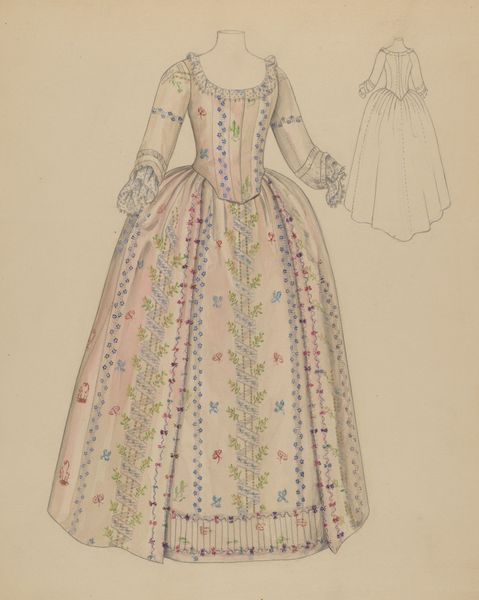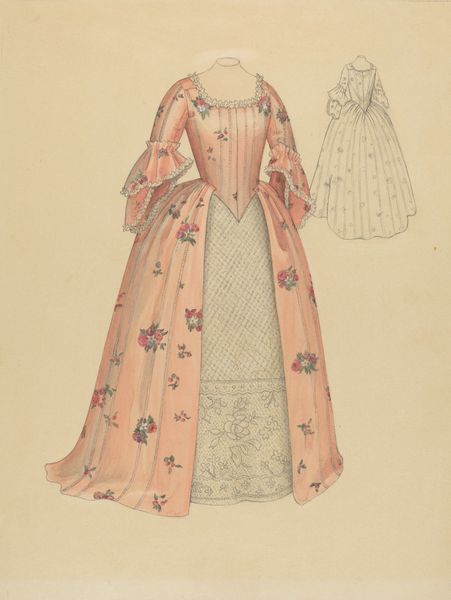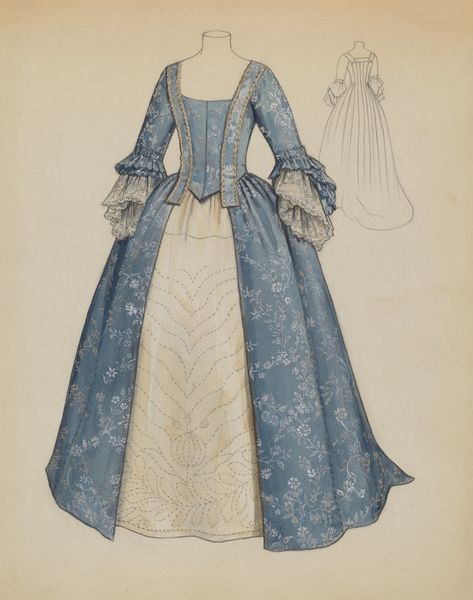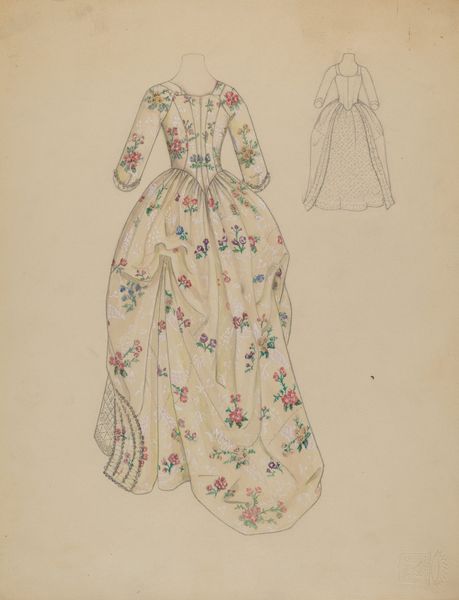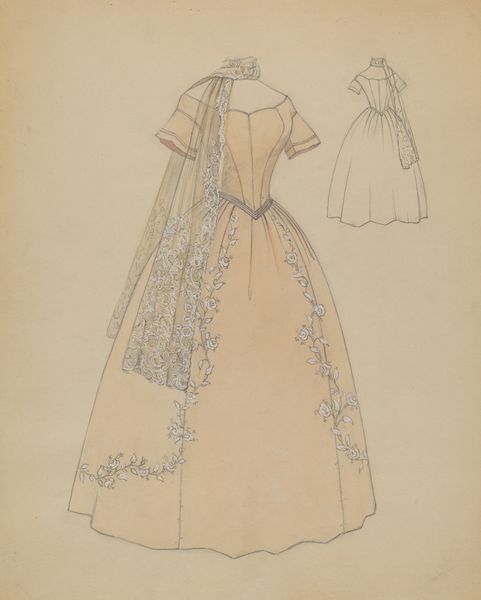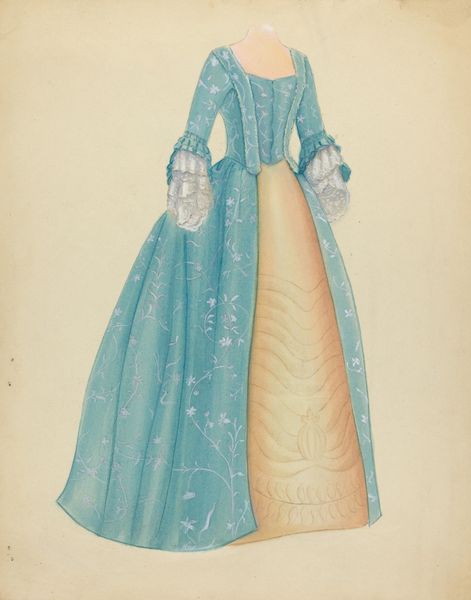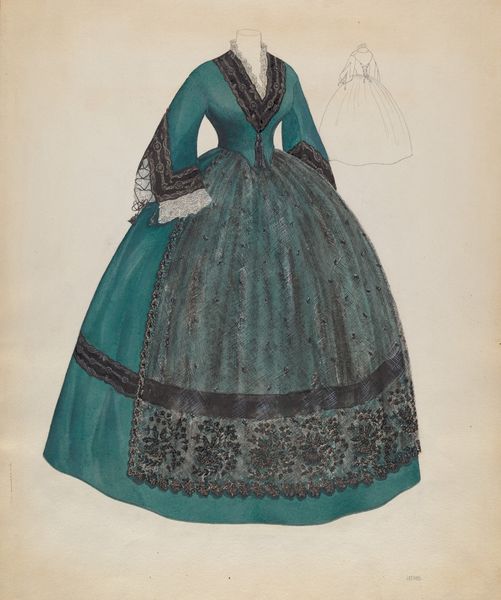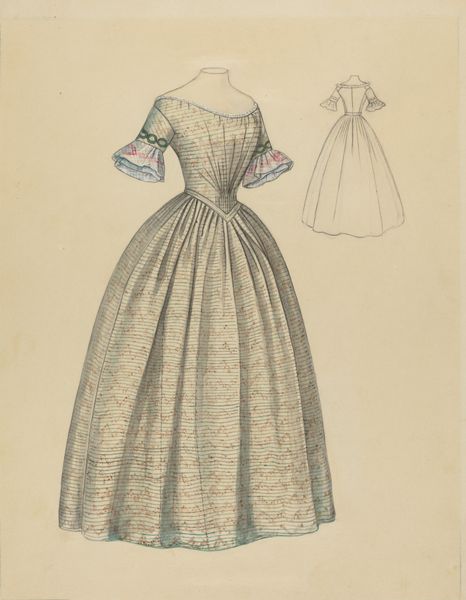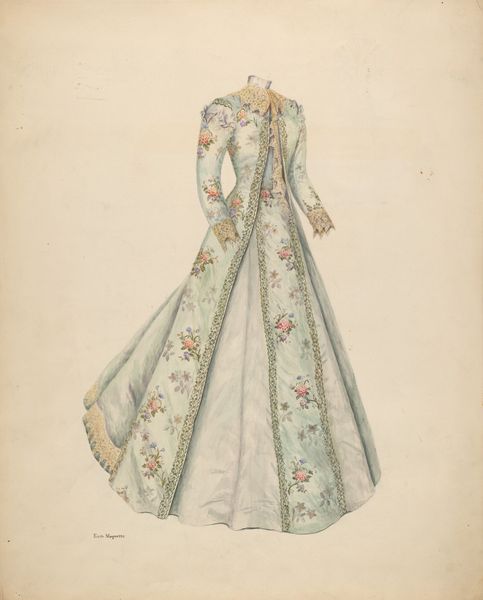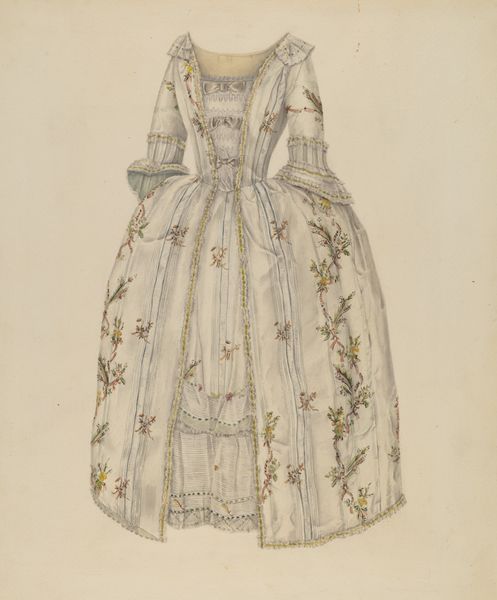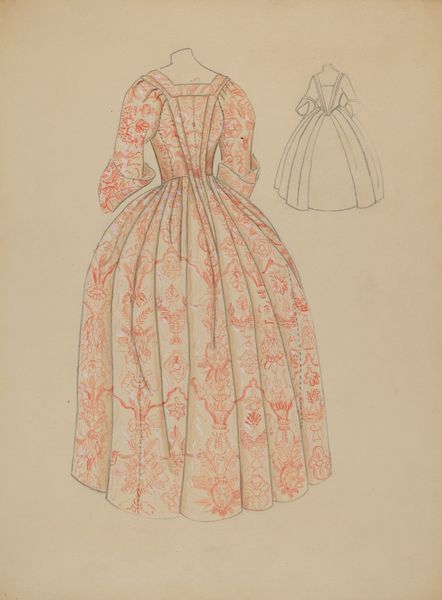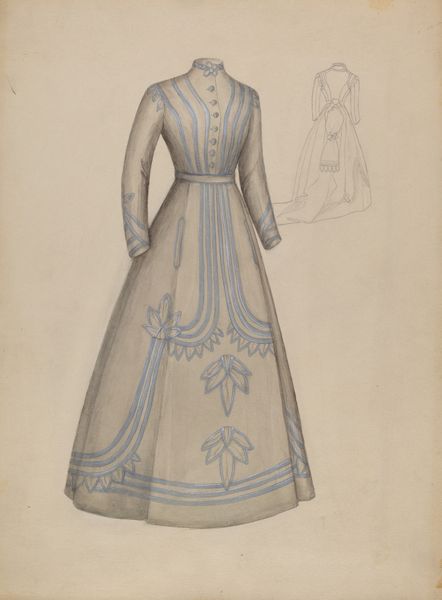
drawing, paper, watercolor
#
portrait
#
drawing
#
figuration
#
paper
#
watercolor
#
historical fashion
#
history-painting
#
academic-art
#
decorative-art
#
fashion sketch
Dimensions: overall: 29.5 x 23.1 cm (11 5/8 x 9 1/8 in.)
Copyright: National Gallery of Art: CC0 1.0
Editor: So, this piece is called "Dress," and it's by Esther Hansen, created sometime between 1935 and 1942, rendered in watercolor on paper. I'm struck by how meticulously detailed the dress is, especially the fabric and the ruffles. What stands out to you about this work? Curator: The level of detail immediately speaks to the labor involved in both the creation of the dress itself, and the artist's representation of it. It challenges our notions of art and craft – is this high art, or simply a well-executed technical drawing for a garment’s production? Look closely at the subtle gradations of the watercolor, attempting to capture the textile’s sheen and drape. Do you see evidence of the artist contemplating the consumer who would wear such an elaborate gown? Editor: I do notice how the choice of watercolor sort of softens the image, making it less technical and more… aspirational, maybe? How does the context of the 1930s-40s impact our understanding of this piece? Curator: Absolutely. Consider the socio-economic context: The lingering effects of the Great Depression, juxtaposed with a burgeoning fashion industry aiming to recapture pre-Depression glamour. The creation of such a detailed sketch might represent an attempt to manufacture desire, to reignite a market for luxury goods through the fantasy presented on paper. Notice how Hansen meticulously renders the pleats and trim. Can you infer anything about the dressmaker's labor involved from this image? Editor: It seems that much handcrafting of detailed designs was needed; and there would have been various workers, from design to material choice to dress making itself. It certainly feels at odds with the Depression era that the image conjures, making me question labor and material excess in such challenging times. I never considered watercolors capable of suggesting labor before. Thank you! Curator: Indeed. By examining the artistic process and the historical context, we can unpack assumptions about the materials, the craft, and social messaging imbedded within this seemingly simple drawing.
Comments
No comments
Be the first to comment and join the conversation on the ultimate creative platform.
